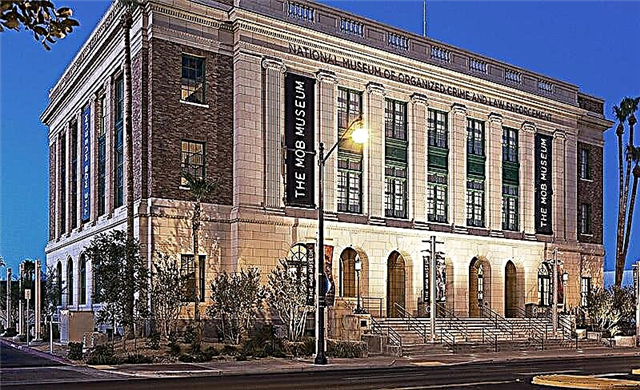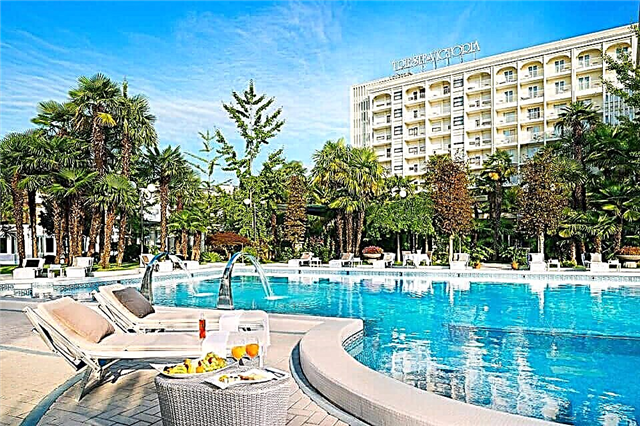Address: Russia, Yaroslavl region, Pereslavl-Zalessky, st. Sadovaya, 5
Start of construction: 1584 year
Completion of construction: 1585 year
Coordinates: 56 ° 44'07.8 "N 38 ° 51'06.0" E
Content:
The church in honor of St. Peter the Metropolitan is one of the most beautiful in old Pereslavl-Zalessky. Art critics attribute it to the last monuments of ancient Russian architecture, which completed the "classical" period. It was built in memory of a man who sought to reconcile the fragmented Russian principalities and strengthen a single Russian state.
The life of Peter the Metropolitan
Metropolitan Peter is revered by all Orthodox believers. He was born in the second half of the 13th century in Volyn, and at the age of 12 he took monastic vows. Peter went a long way of church ministry and by the end of the 13th century he became abbot.

Yuri Lvovich, the then Grand Duke of Galitsky and Volynsky, sent him to the Orthodox religious capital of Constantinople for the purpose of consecration. And in 1308, the Patriarch of the Church Athanasius made Peter the Metropolitan of Kiev and All Russia. Returning from Constantinople, the new head of the Russian Church lived in Kiev for about a year, and then moved to Vladimir.
It was a time of internecine feud between the great princes of Moscow and Tver. Peter actively supported the Moscow prince Yuri. For this, Bishop Andrei of Tver accused the Metropolitan before the Patriarch. He was accused of simony, that is, the sale of church offices. For the trial of Peter in 1311, a representative Pereslavsky Cathedral was convened. On it, thanks to the ardent intercession of the Moscow princes, the metropolitan was acquitted.
In Russian history, this church hierarch became famous for his vigorous activity and concern for the reconciliation of the feuding appanage princes. Peter tirelessly traveled to cities and towns and spoke in them with sermons, urging not to allow senseless bloody feuds between neighboring principalities, which only weaken the Russian land. Thus, he contributed to the centralization and strengthening of the Moscow state.
In 1325, at the invitation of the Moscow prince Ivan Danilovich (Kalita), Peter moved from Vladimir to Moscow. In early August of the following year, 1326, the Metropolitan participated in the laying of the Assumption Cathedral in the Moscow Kremlin. And on December 21 of the same year, Peter died and was buried in a stone crypt in the altar of the cathedral he founded.

During his lifetime, many Russian princes venerated Peter as a saint. Church chapels were built in his honor. There is such a chapel in the Cathedral of St. Basil the Blessed on Red Square in Moscow. In 1339, the Orthodox Church canonized Peter as a saint.
History of the church in honor of St. Peter the Metropolitan
The first document that mentions a wooden church built in honor of Metropolitan Peter is a letter of 1420. He stood in the old "royal court". This was the name of the place where the great dukes lived. Here Peter stayed when he was in Pereslavl. And it was here, in the princely chambers, that the famous trial of him took place in 1311.
After the wooden church was completely dilapidated, it was decided to replace it with a stone one. Historians believe that this decision was made by Tsar Ivan the Terrible himself. He revered Peter as his spiritual patron and allocated the necessary money for the construction of a new church. Some historians are inclined to believe that the tsar wanted to atone for the sin of killing his son, Tsarevich Ivan. In favor of the version about the participation of Ivan the Terrible in the construction of the church is the fact that it was decided to put it on the "sovereign" (or prince's) court.
The temple was built of bricks with oak ties. The building was divided into two tiers by a horizontal belt. This architectural solution was very expensive in terms of economic costs. The consecration of the new church took place on September 27, 1584 (or 1585).

The basements of the temple were used for storing ammunition and gunpowder of the Pereslavl military garrison and as a prison for "sovereign" criminals who fell into disgrace. Later, the Pereslavl Provincial Chancellery placed its treasury in these basements.
Until 1781, the church was supported by the state budget. At the very end of the 18th century, the lower floor of the church, the basement, was cleaned and adapted for a new warm church, which was consecrated in honor of the Archangel Michael. And on the upper, cold floor there was a throne in honor of St. Peter the Metropolitan of Kiev and All Russia. In the 19th century, the parish of this temple numbered about 300 people.
The first restoration and restoration work in the church took place in 1888-1893. They were led by an experienced restorer and Russian architect Vladimir Vasilyevich Suslov (1857-1921), a well-known researcher of the monuments of Russian architecture.
Until 1940, the church was active. Then they closed it and began to use it as a warehouse.
In 1957 of the last century, large-scale works of the Yaroslavl scientific restoration workshop restored the original shape of the windows and the old roof of this temple. Restorers have strengthened the brickwork, cut down the plaster laid in the 19th century, and opened the old arches. And in the 1970s, the temple gallery was restored.
In 1991, the temple was handed over to believers. It contains two iconostases, fragments of wall paintings and ancient floors made of plinth - thin burnt bricks, as well as old doors leading to the temple on the upper floor.

The church is now closed. Outside and inside, it is rather dilapidated and needs new large-scale restoration work.
Temple architecture
The Pereslavl Church of Peter the Metropolitan is unusual in its architecture. It does not have protruding apses typical for Russian churches. And in terms of this church is a regular, equal-pointed cross. The temple's tent is faceted and placed in several rows with arches in the form of kokoshniks. The top of the church is crowned with an iron scaly head shaped like a cut onion.
At first, the main volume of the tent was surrounded on three sides by a two-storey gulbishche. But in the 17th century, this open gallery was founded. There used to be a wooden belfry next to the church. Over time, it fell into disrepair, and in 1821 a bell tower was built in its place, crowned with a spire rising into the sky.
The interior of the church, which has survived to this day, dates back to the 19th century. Unfortunately, the earlier decor, murals and church utensils have not survived.
Visit mode
You can get inside the cathedral only during church services on the days of temple and patronal holidays: February 7 (Sunday) or the closest Sunday to this day, as well as August 24, October 5 and December 21.

How to get there
The Metropolitan Peter Church is located at the address: Pereslavl-Zalessky, st. Sadovaya, 5. It stands 250 m southeast of the Transfiguration Cathedral, in the very center of the city. From the city bus station, you can come here by bus or taxi, or come on foot (about 3 km).











